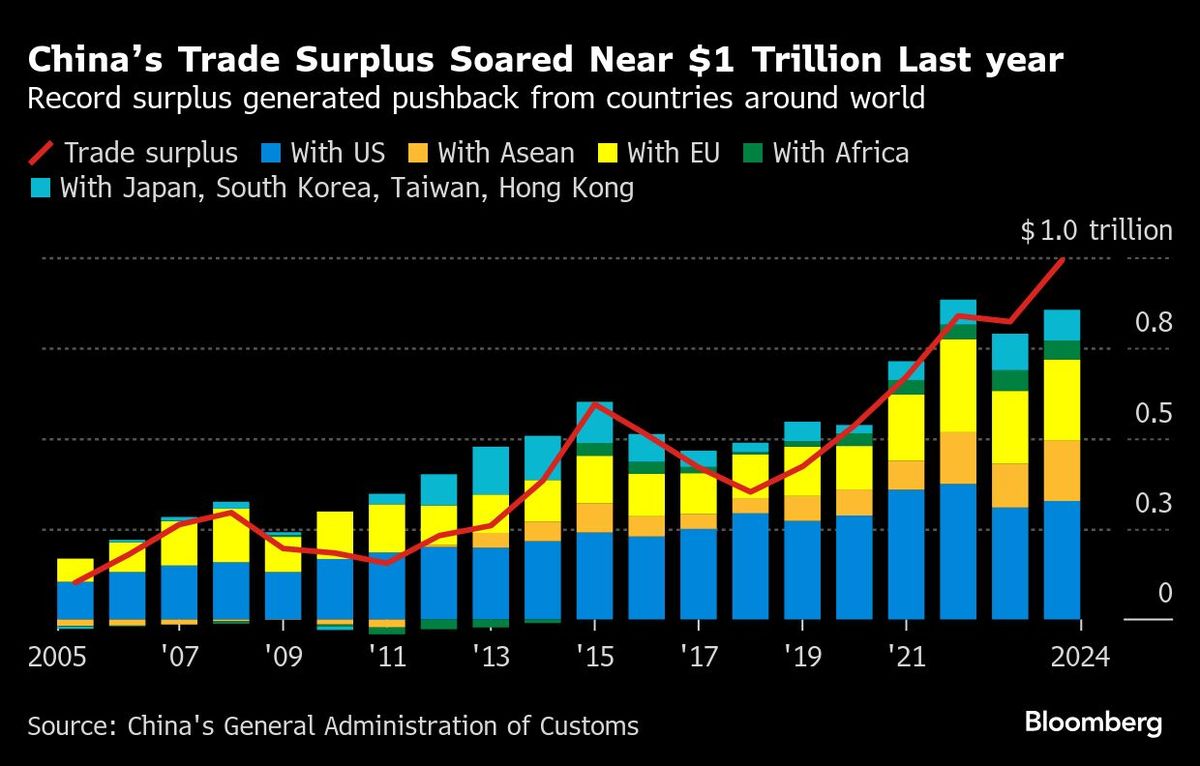
(March 26): China is running a trade surplus that the world economy can’t “live with,” former US president Bill Clinton’s top trade official said, warning its exports would face new roadblocks without fixing the domestic causes fuelling the imbalances.
“China is exploiting manufacturing, suppressing domestic consumption, and expects that the world can live with a trillion dollar Chinese trade surplus, which most certainly the world cannot,” Charlene Barshefsky said in an interview with Bloomberg Television in Hong Kong.
Barshefsky, who negotiated the terms of China’s accession to the World Trade Organization more than two decades ago, said that agreement was “absolutely not” a mistake, helping lift hundreds of millions out of poverty and turning the country into a major driver of worldwide demand during the 2008 global financial crisis.
But China’s convergence toward “market-based norms” has reversed course as domestic reforms stalled, she said. It leaned increasingly on investment in manufacturing to drive growth and began to flood the market with exports, according to Barshefsky, who served as US trade representative from 1997 to 2001.
It’s “not what the world needs — we don’t have a supply problem in the world, we have a demand problem,” she said. “China has reverted to a highly static economy.”
Barshefsky echoed a chorus of senior US officials from Treasury Secretary Scott Bessent to his predecessor Janet Yellen, who have long urged China to rebalance its economy in favor of consumption. Beijing has signaled it’s finally ready to make that shift, as Donald Trump’s tariffs create additional urgency to boost domestic demand.
But so far, the actual policies rolled out to encourage spending remain limited. Deeper reforms to the tax system and public services that many economists have advocated will be difficult to achieve due to a fall in budget income and resistance from provinces that benefit from the current setup.
Exports meanwhile contributed to nearly a third of China’s economic expansion in 2024, when the country’s trade surplus soared to a record US$992 billion (RM4.4 trillion).
The outlook for overseas shipments is far less upbeat this year after Trump imposed additional 20% tariffs on Chinese goods over the past two months. Even so, their impact will likely take longer to materialise as exporters rushed to frontload orders, leading sales abroad to increase 2.3% in January-February from a year ago.
The efforts to block China’s exports around the world will only intensify if the country neglects “structural problems” at home, including by reforming its social safety net, according to Barshefsky.
Potentially an even more potent solution to trade imbalances lies in the US, she said.
Barshefsky urged the government there to bring down its fiscal deficit and work with allies to reorient supply chains and bring manufacturing back. Authorities also need to take better care of people left unemployed after an exodus of jobs abroad and advances in technology, she said.
Officials across the Democratic and Republican parties need to reach a long-term understanding on how to retain US competitiveness, and implement more consistent policies in areas like fiscal policy and incentives for manufacturing, according to Barshefsky.
“More important than China in solving trade imbalances is the United States,” she said.
Uploaded by Magessan Varatharaja
- US to revoke authorisations to foreign partners of Venezuela's PDVSA — Reuters
- Young man rescued from Cambodia job scam repatriated to Malaysia
- Festive season airfares to Sabah, Sarawak remain low, controlled — Loke
- Myanmar quake death toll passes 1,600, as junta lets in foreign rescuers
- Man of the house

